From Skim to Soy to…Pea Milk? A Guide to Milk Alternatives
We all know that milk does a body good, but many of moms are interested in finding alternatives to traditional cow milk and wonder about the pros and cons of each are. Maybe your baby has allergies, eczema, or an easily upset stomach. Perhaps you’re sticking to a vegan diet, steering clear of nuts, or cutting out soy or gluten. Whatever your dietary needs are, there’s a milk for that!
The Animal-Based Milks:


Whole Cow’s Milk
Cow’s milk is typically avoided until a child turns one because it doesn’t contain the iron your baby needs. After your baby’s first birthday, though, your pediatrician will most likely recommend switching your child to whole milk if you’re no longer breastfeeding.
Pros: It’s inexpensive and widely available, and it has 8 grams of protein to keep your child full. It has the fats a growing baby needs, and it’s often fortified with vitamin D.
Cons: Whole milk is high in saturated fat (4.6 grams per serving) and high in sugar (12 grams). If your child is sensitive to lactose, whole milk is pretty much out of the question. Somewhat surprisingly, whole milk has the least amount of calcium (27% of your daily value) out of all the milks on our list.


Skim Cow’s Milk
Skim milk is very similar to whole milk, except much of the fat has been skimmed off. It’s a popular choice among adults because it’s still high in nutrients, but recent research has suggested that whole milk might be better for you, even if you’re looking to lose weight.
Pros: One cup of skim milk has a little over half the calories of whole milk, but about the same amount of sugar, protein, carbohydrates, and calcium. It’s fewer calories because it’s significantly lower in saturated fat – just 0.1 grams per serving!
Cons: Your baby won’t feel as full because there are fewer calories in skim milk. The fat that’s missing from skim milk is important for your baby’s brain development, especially if she is younger than two. You’ll have to find another way for your baby to get that healthy fat.
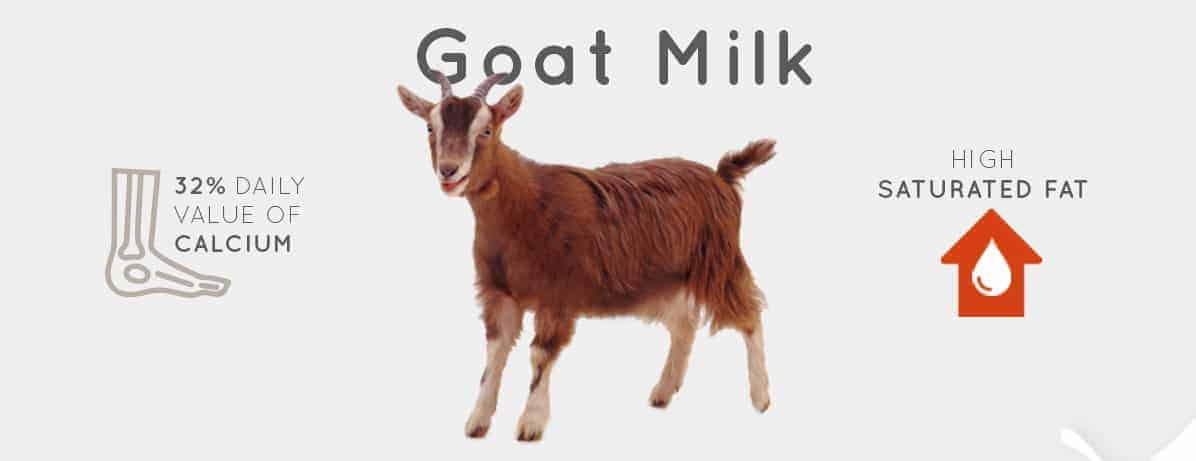
 Goat’s Milk
Goat’s Milk
Although goat’s milk still contains lactose, it can be an alternative to dairy-sensitive individuals because the proteins in goat’s milk are slightly different than those found in cow’s milk. However, doctors will typically recommend that those who don’t do well with cow’s milk steer clear of goat’s and sheep’s milk, as well.
Pros: It may be easier to digest than cow’s milk. Goat’s milk is slightly lower in sugar that cow’s milk (11 grams instead of 12) and slightly higher in protein (9 grams instead of 8). It also has 32% of your daily recommended value of calcium, and 31% of your vitamin D. (This can vary by brand, since some companies add vitamins to their milks.)
Cons: It’s pretty tough to find. Also, goat’s milk is much higher in saturated fat (7 grams!) than any other milk on our list. If your baby drinks a lot of milk, this isn’t a great choice.
Lactose-Free Milk
Lactose-free milk is not dairy free. It’s made entirely of real milk, with the addition of lactase, an enzyme that breaks down the lactose in milk. Lactose intolerance is common – about 65% of children and adults have a reduced ability to digest lactose. Lactose-free milk has the nutrients of milk minus the troubling lactose.
Pros: You’re getting everything you’d get in a glass of milk, but it’s easier to digest.
Cons: You’re getting all the cons of a glass of milk, too. It’s high in saturated fat and high in sugar. Concerns about hormones or antibiotics passing from the cow to its milk would still be a problem with lactose-free milk.
Plant-Based Milks

Almond Milk
Almond milk is the most popular milk alternative. It tastes smooth and mild, so it’s a good choice for flavor-averse toddlers. It’s also free from soy or gluten, and since it’s plant based rather than animal based, you don’t have to worry about antibiotics or hormones.
Pros: It’s widely available, fairly low in sugar (7 g), and has 45% of the daily value of calcium -even more than cow’s and goat’s milk!
Cons: A cup of almond milk is just 60 calories. It doesn’t have any fat – healthy or otherwise – and although it’s made from protein-powerful almonds, almond milk only has 1 gram of protein. If you’re allergic to nuts, you shouldn’t drink almond milk.
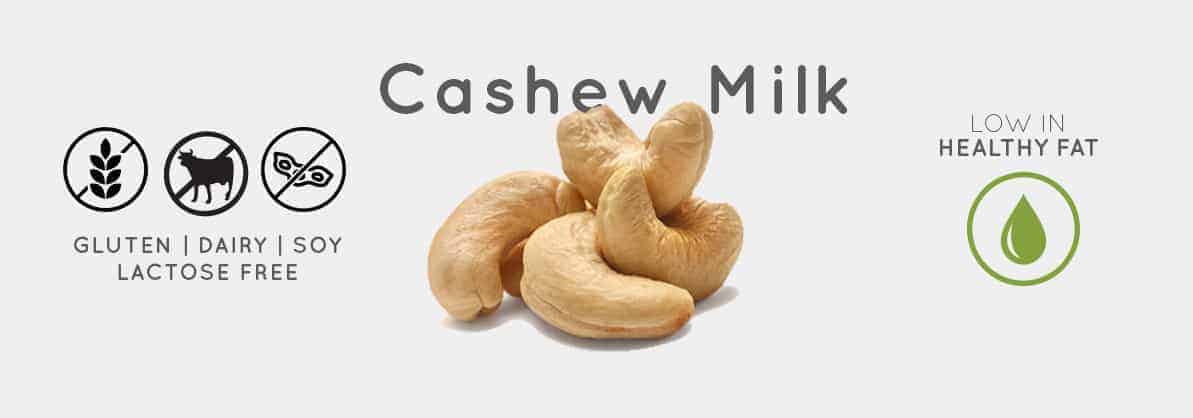
Cashew Milk
Newer types of nut milks are entering the market, and cashew milk is a creamy and delicious option for people avoiding dairy, soy, lactose, and/or gluten.
Pros: Like almond milk, it has less sugar than cow’s milk (7 grams compared to 12). It’s also surprisingly high in calcium (45% of your recommended daily allowance), vitamin D (25%), and vitamin E (20%).
Cons: Cashew milk is more difficult to find than almond milk. There are only 60 calories in a cup, so your baby would feel less full than if she drank the same amount of, for example, lactose-free milk.

Hazelnut Milk
Like the other nut-based milks, hazelnut milk is soy-free, dairy-free, lactose-free, and gluten-free. However, it has a much nuttier taste than its almond and cashew cousins.
Pros: Hazelnuts are high in monounsaturated fat, protein, and minerals like copper and magnesium. It’s more calorically dense than the other nut milks, packing a 110 calorie punch in each cup.
Cons: It doesn’t taste like cow’s milk (although this could be a pro!). It’s also very high in sugar (14 grams) and isn’t the best choice if you’re looking for calcium (30% of your daily value in one cup). Plus, it’s hard to find and can be expensive.
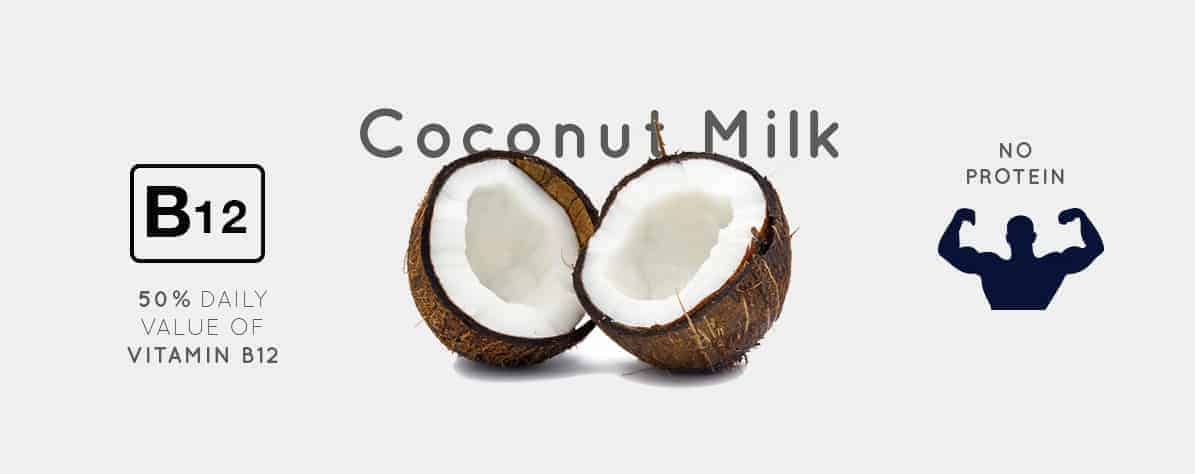
Coconut Milk
Although the FDA classifies them as tree nuts, coconuts are actually fruits. Some people who are allergic to tree nuts have no problem with coconuts or coconut milk. If you (or your child) are allergic to nuts, talk to a doctor before introducing coconut milk into your diet.
Pros: Coconut milk tastes good and isn’t too hard to find. It’s also got 50% of your daily value of Vitamin B12 and 45% of your calcium.
Cons: It doesn’t have any protein, and you’ve still got lots of sugar (7 grams). Coconut milk has 4.5 grams of saturated fat, which is almost as much as whole milk (4.6 grams).
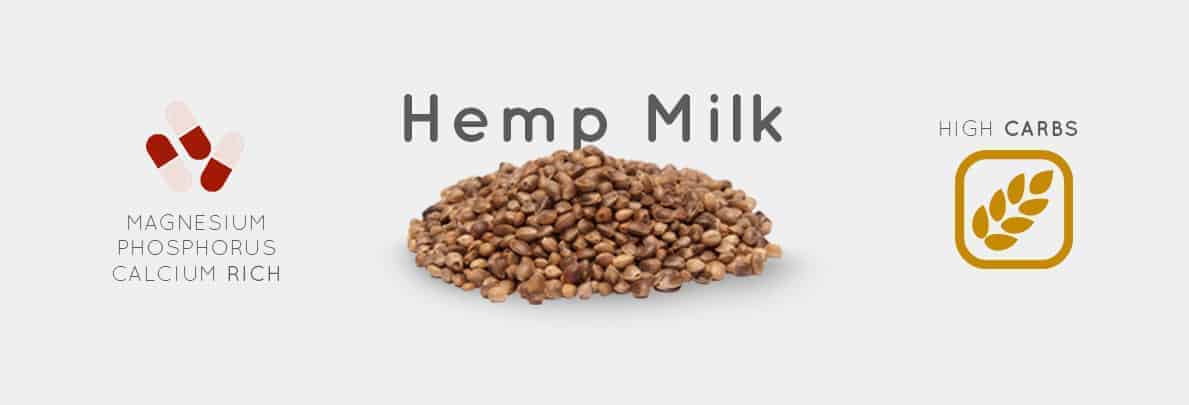
Hemp Milk
Hemp milk is a newer addition to the alternative milk market. Made from the cannabis seed, it isn’t nut-free but it doesn’t contain any tree nuts, which are a common allergen. Although it’s made from hemp, hemp milk doesn’t actually have any THC content, so no one is getting high off of hemp milk.
Pros: It’s full of vitamins and minerals – 25% of your daily vitamin B12, 25% of magnesium, 35% of your daily riboflavin, and 45% of your phosphorus needs. It has the most calcium of any milk on our list (50% of your daily value) and has plenty of vitamin D, too (30%).
Cons: At 20 grams, it’s got more carbs than any other milk. It’s more sugary than cow’s milk (14 grams versus 12 grams). And with only 3 grams of protein, you’ll want to add some yogurt, eggs, or other protein-rich foods to your child’s diet.

Soy Milk
After almond milk, soy milk is the most popular plant-based milk alternative. Obviously, it’s not a good choice for those avoiding soy, but it is free of gluten and lactose. Nut allergies go hand-in-hand with soy allergies, so talk to your doctor if you or your child are allergic to nuts.
Pros: When it’s unsweetened, it’s the least sugary milk on our list (just 6 grams). It’s also high in protein (8 grams), and with 2 grams of fiber, it is one of the two most fibrous milks we researched. (Oat milk is the other.)
Cons: It’s expensive. In 2015, a half-gallon of soy milk was an average of $0.56 more than the same amount of cow’s milk. Sweetened and flavored varieties can have a lot of sugar, so check the label!

Pea Milk
While they probably could have come up with a better name, pea milk is surprisingly healthy and is a great choice if you’re on a really restricted diet. Ripple has been the biggest brand of pea milk thus far, but others are entering the market.
Pros: It’s vegan, nut-free, lactose-free, dairy-free, soy-free, and gluten-free. It’s also the lowest in sugar (6 grams) while providing plenty of protein (8 grams).
Cons: It’s not widely available, and when it does come to your supermarket, it’s likely to be pretty expensive.

Oat Milk
Oat milk is essentially oats and water, so it’s free of nuts, lactose, and soy. Like hazelnut milk, oat milk doesn’t actually taste much like cow’s milk. But it is sweet and yummy in its own right!
Pros: Like soy milk, it has 2 grams of fiber. Oat milk also has an ample 4 grams of protein. While hard to find in stores, you can make your own quite easily.
Cons: SUGAR. There are 19 grams of it in every cup, to be precise. You can avoid this if you make it at home, but that’s labor intensive. It isn’t a significant source of many vitamins or minerals, either.

Rice Milk
Rice milk is very similar to oat milk, but it doesn’t have as much protein. Scientists in the United Kingdom have recommended that parents avoid feeding rice milk to children under age five due to potentially dangerous levels of arsenic.
Pros: It has no saturated fat or cholesterol, and it’s hypoallergenic.
Cons: High in sugar (13 grams), low in protein (0.7 grams), and the primary nutrients are additives. Plus, there’s the whole arsenic thing.
Before you change your child’s diet, talk with your doctor about potential pros and cons. While it’s nice to be able to buy one type of milk for the whole family, during your children’s formative years it might be worth having a few different types in the fridge.


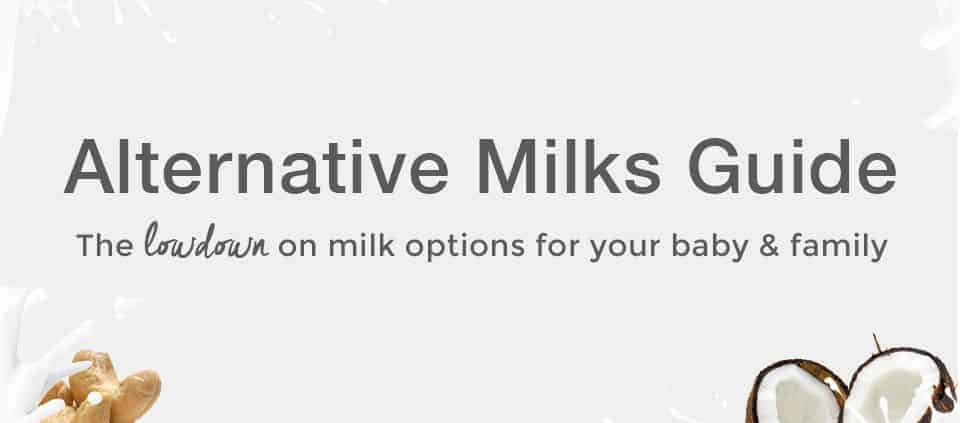



Leave a Reply
Want to join the discussion?Feel free to contribute!